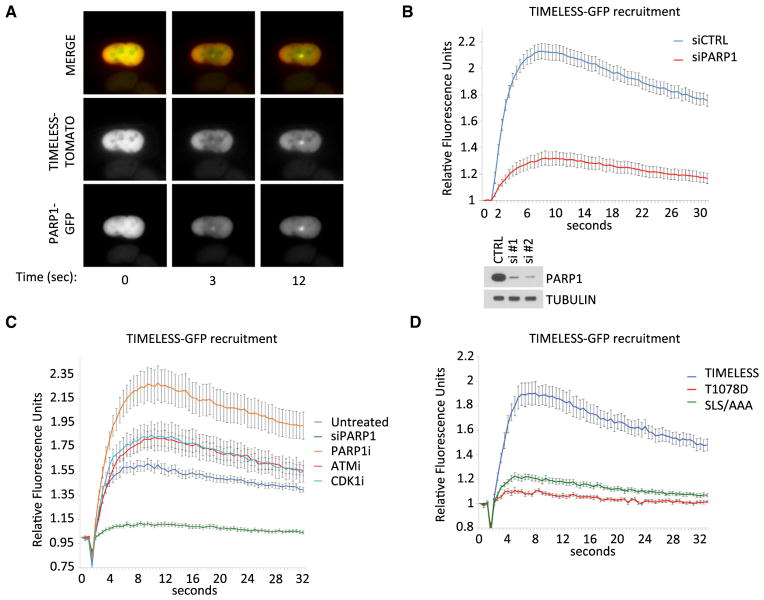Figure 3. TIMELESS Requires PARP1, but Not Its Activity, to Be Recruited to DNA Damage Sites.
(A) TIMELESS-Tomato and PARP1-GFP were stably co-transfected in U2OS cells and their recruitment to sites of DNA damage was captured by live cell imaging following laser microirradiation. Times are indicated in seconds.
(B) U2OS cells stabling expressing GFP-TIMELESS were depleted of PARP1 for three days using siRNA oligo #1, and the kinetics of TIMELESS recruitment to DNA damage sites were assessed by live cell imaging of laser-induced lesions. For each condition, n ≥ 28. SE is shown for each time point. Panels below show efficiency of knockdowns using western blot.
(C) U2OS cells stabling expressing GFP-TIMELESS were treated for 1 hr with inhibitors to PARP1, ATM, DNA-PK, and CDK1 prior to laser microirradiation. Next, kinetics of TIMELESS recruitment to DNA damage sites were assessed by live-cell imaging of laser-induced lesions. PARP1 knockdown (using oligo #2) was used for comparison. For each condition, n ≥ 20. SE is shown for each time point.
(D) U2OS cells stabling expressing either wild-type GFP-TIMELESS or two GFP-TIMELESS mutants that do not bind PARP1 were subjected to laser micro-irradiation. Next, kinetics of recruitment of wild-type TIMELESS and TIMELESS mutants to DNA damage sites were assessed by live-cell imaging of laser-induced lesions. For each condition, n ≥ 15. SE is shown for each time point.

